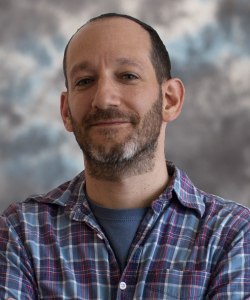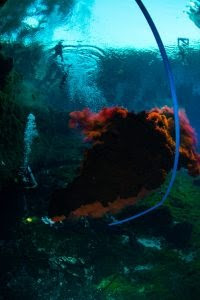Something's in the Water

David Kaplan, Ph.D., an associate professor in the Engineering School of Sustainable Infrastructure & Environment (ESSIE) within the University of Florida Herbert Wertheim College of Engineering, along with a team of scientists, wrote an amicus curiae brief for the U.S. Supreme Court about a case regarding the Clean Water Act (CWA) that will have a lasting impact on public policy. An amicus curiae brief is a written submission to a court in which a person or organization can set out legal arguments and recommendations in a given case.
In April, the Supreme Court declared, in a 6-3 ruling, that the CWA requires the federal government to regulate some groundwater pollutants that can navigate into waters such as oceans, rivers and streams.
In the case presented, the County of Maui was being sued by environmental groups in Hawaii for pumping treated sewage into the ground, where about 90% of it reached the Pacific Ocean, threatening marine ecosystems. The larger issue in the case was whether the county was allowed to discharge pollutants into groundwater without a CWA permit, especially if the groundwater is connected to surface water.

“Environmental engineers have been working for over 100 years to improve the way that we dispose of wastes and the results have been incredible in terms of lives saved and environmental protection,” Dr. Kaplan said.
With over two decades of field experience, Dr. Kaplan, who has been at the forefront of advocating for a resilient environment, brought his expertise to the brief. He has created an initiative to monitor and manage coastlines, provided innovative approaches to water conservation, and provided data to protect the health of the Amazon River.
Established in 1972, the CWA was created to protect the quality of water by regulating pollutant discharges in streams, wetlands, rivers, lakes and coastal areas.
The CWA has been responsible for cleaning up tens of thousands of lakes and rivers and protecting drinking water for hundreds of millions of people. It also impacted water quality for the environment and recreational activities such as fishing and swimming.
Groundwater flow and pollutant transport are complex topics, but Dr. Kaplan and his colleagues were able to sway the justices, with Justice Stephen Breyer remarking from the bench, “The scientists really convinced me they’re geniuses and they can trace all kinds of things.”
“Before this ruling, only pollutants discharged in surface waters—like rivers, lakes, ocean—were covered by the CWA, but wastewater could be discharged to groundwater without a permit,” Dr. Kaplan said. “With this ruling, the Supreme Court acknowledged that many groundwater systems are very closely connected to surface waters, so pollution of groundwater needs to be regulated in order to protect surface water. Our groundwater and surface water resources are now better protected from pollution. In short, the ‘groundwater loophole’ is closed.”
Their decision will change the way wastewater is managed across the U.S. With the new ruling, wastewater will have to be treated to a higher standard before discharge in order to protect the reef.

Dr. Kaplan says the same idea applies to many other places where groundwater and surface water systems are closely linked. Florida’s springs are fed by the Floridan Aquifer, so any pollution reaching the groundwater will eventually make its way to the springs. Regulating pollution of the groundwater consequently protects our drinking water and natural environment.
“The most exciting thing about being involved in this process was to see the role of science validated in setting public policy, especially regarding the environment. Seeing the justices read, consider and even cite our brief in their decision has been one of the proudest moments of my career,” Dr. Kaplan said.
[ad id=’23154′]